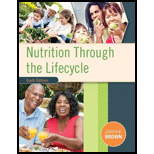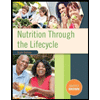
Concept explainers
To examine: Whether the statement “Semiquantitative measures of dietary assessment provide good enough estimates of dietary intake to rank individuals by their food and nutrient intakes. Quantitative dietary assessment methods are needed to evaluate an individual's dietary intake” is true or false.
Introduction: The type of diet an individual consumes influences body health. Dietary intake can be decided by the dietary report and dietary observation of the person. Quantitative assessment is related to the measured quantity and quality diet of the person for the proper regulation and development, and semiquantitative measures of dietary assessment tells about the body health by assessment of the whole dietary chart.
Want to see the full answer?
Check out a sample textbook solution
Chapter 1 Solutions
Nutrition Through the Life Cycle (MindTap Course List)
- Lifetime Physical Fitness & WellnessHealth & NutritionISBN:9781337677509Author:HOEGERPublisher:Cengage
 Nutrition Through The Life CycleHealth & NutritionISBN:9781337919333Author:Brown, Judith E.Publisher:Cengage Learning,
Nutrition Through The Life CycleHealth & NutritionISBN:9781337919333Author:Brown, Judith E.Publisher:Cengage Learning,  Nutrition Through the Life Cycle (MindTap Course ...Health & NutritionISBN:9781305628007Author:Judith E. BrownPublisher:Cengage LearningEssentials Health Info Management Principles/Prac...Health & NutritionISBN:9780357191651Author:BowiePublisher:Cengage
Nutrition Through the Life Cycle (MindTap Course ...Health & NutritionISBN:9781305628007Author:Judith E. BrownPublisher:Cengage LearningEssentials Health Info Management Principles/Prac...Health & NutritionISBN:9780357191651Author:BowiePublisher:Cengage





